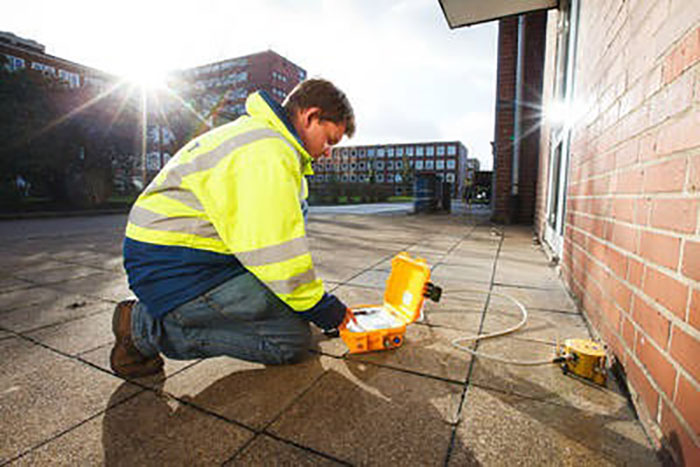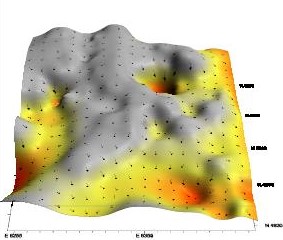BHATE Geosciences brings together over four decades of geophysics data acquisition and processing leadership with a clear focus on our clients’ needs. Geophysical exploration is conducted to supplement and enhance geotechnical data. 3-D models can be created using a combination of field exploration and subsurface geophysical mapping for site characterization of the geological structure, groundwater and underground manmade conditions.
Electrical Resistivity
- Electrical current is passed through the ground at regular points on a survey grid.
- Electrical resistance in the soil varies and is affected by the presence of subsurface features.
- The patterns of resistance are recorded, plotted and interpreted by our geotechnical engineers.
Seismic Refraction/Seismic Reflection
- Measuring time required for a seismic impulse to travel from a seismic source to a receiver.
- The choice of the seismic source depends upon the length of the seismic line, the degree of resolution desired, and the environmental suitability of a source to:
- Map bedrock topography
- Determine the depth of gravel, sand or clay deposits
- Determine the depth to the water table
- Detect subsurface caverns
- Estimate rippability
- Detect shallow faults and fracture zones
Multichannel Analysis of Surface Waves (MASW)
- Measures seismic surface waves generated and analyzes the velocities of surface waves to deduce shear-wave velocity variations below the surveyed area.
- Shear-wave velocity is used to derive load-bearing capacity.
- Our geotechnical engineers analyze and interpret the wave data.
Microgravity Surveys/Gravity Surveys
- Detect subsurface cavities or changes in subsurface density and hence rock types.
- Measures the gravitational field at a series of different locations over an area of interest.
- Measurements are interpreted by our geotechnical engineers.
Refraction Microtremor (ReMi) Seismic Method
- Provides an effective and efficient means to acquire general, one-dimensional, info about large volumes of the subsurface with one setup.
- Estimates shear wave velocity and provides site-specific NEHRP and IBC Vs30 soil classification data.
- Testing is performed at the ground surface with no need for a specially cased borehole.
- ReMi is useful in determining site-specific earthquake response, liquefaction potential, soil compaction, and subsurface geology.
Geotechnical Vibration and Noise Monitoring
- Remote vibration monitoring
- Mechanical equipment evaluation
- Pre-construction and pre-blast surveys
Ground Penetrating Radar (GPR Surveys)

BHATE uses geophysical methods, structural condition evaluation of buildings, infrastructure assessment for roads, bridges and runways and other applications to provide engineering solutions that are:
- Non-destructive - ideal for use in populated areas or structures in active use with minimal disruption
- Cost-effective - geophysics does not require excavation or direct access to subsurface except for subsequent localized validation of findings and provides a means of evaluating large areas rapidly
- Comprehensive - combinations of geophysical methods can provide the means of applying different techniques to solve complex problems
- Proven - the majority of techniques have been in existence for more than a half-century and BHATE has been working with them for over 40 years


